Intel Core i7-11700K Review: Blasting Off with Rocket Lake
by Dr. Ian Cutress on March 5, 2021 4:30 PM EST- Posted in
- CPUs
- Intel
- 14nm
- Xe-LP
- Rocket Lake
- Cypress Cove
- i7-11700K
CPU Tests: Encoding
One of the interesting elements on modern processors is encoding performance. This covers two main areas: encryption/decryption for secure data transfer, and video transcoding from one video format to another.
In the encrypt/decrypt scenario, how data is transferred and by what mechanism is pertinent to on-the-fly encryption of sensitive data - a process by which more modern devices are leaning to for software security.
Video transcoding as a tool to adjust the quality, file size and resolution of a video file has boomed in recent years, such as providing the optimum video for devices before consumption, or for game streamers who are wanting to upload the output from their video camera in real-time. As we move into live 3D video, this task will only get more strenuous, and it turns out that the performance of certain algorithms is a function of the input/output of the content.
HandBrake 1.32: Link
Video transcoding (both encode and decode) is a hot topic in performance metrics as more and more content is being created. First consideration is the standard in which the video is encoded, which can be lossless or lossy, trade performance for file-size, trade quality for file-size, or all of the above can increase encoding rates to help accelerate decoding rates. Alongside Google's favorite codecs, VP9 and AV1, there are others that are prominent: H264, the older codec, is practically everywhere and is designed to be optimized for 1080p video, and HEVC (or H.265) that is aimed to provide the same quality as H264 but at a lower file-size (or better quality for the same size). HEVC is important as 4K is streamed over the air, meaning less bits need to be transferred for the same quality content. There are other codecs coming to market designed for specific use cases all the time.
Handbrake is a favored tool for transcoding, with the later versions using copious amounts of newer APIs to take advantage of co-processors, like GPUs. It is available on Windows via an interface or can be accessed through the command-line, with the latter making our testing easier, with a redirection operator for the console output.
We take the compiled version of this 16-minute YouTube video about Russian CPUs at 1080p30 h264 and convert into three different files: (1) 480p30 ‘Discord’, (2) 720p30 ‘YouTube’, and (3) 4K60 HEVC.
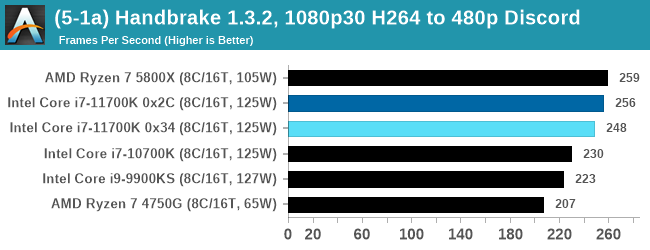
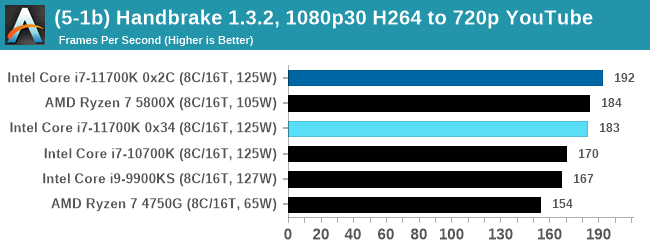
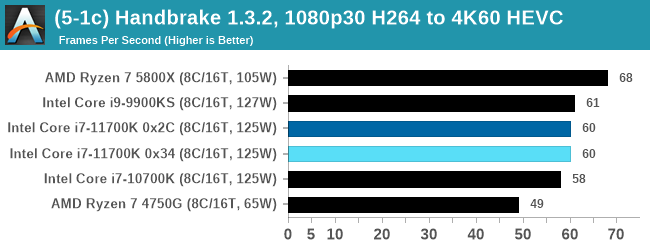
Up to the final 4K60 HEVC, in CPU-only mode, the Intel CPU puts up some good gen-on-gen numbers.
7-Zip 1900: Link
The first compression benchmark tool we use is the open-source 7-zip, which typically offers good scaling across multiple cores. 7-zip is the compression tool most cited by readers as one they would rather see benchmarks on, and the program includes a built-in benchmark tool for both compression and decompression.
The tool can either be run from inside the software or through the command line. We take the latter route as it is easier to automate, obtain results, and put through our process. The command line flags available offer an option for repeated runs, and the output provides the average automatically through the console. We direct this output into a text file and regex the required values for compression, decompression, and a combined score.
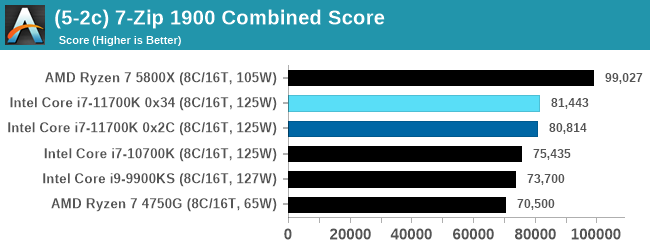
An increase over the previous generation, but AMD has a 25% lead.
AES Encoding
Algorithms using AES coding have spread far and wide as a ubiquitous tool for encryption. Again, this is another CPU limited test, and modern CPUs have special AES pathways to accelerate their performance. We often see scaling in both frequency and cores with this benchmark. We use the latest version of TrueCrypt and run its benchmark mode over 1GB of in-DRAM data. Results shown are the GB/s average of encryption and decryption.
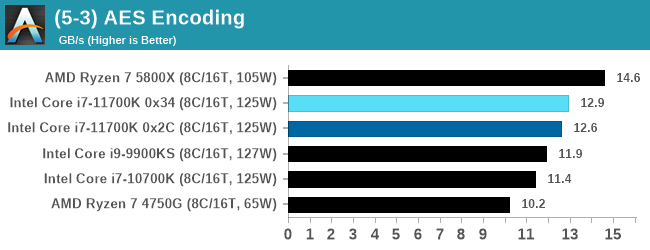
WinRAR 5.90: Link
For the 2020 test suite, we move to the latest version of WinRAR in our compression test. WinRAR in some quarters is more user friendly that 7-Zip, hence its inclusion. Rather than use a benchmark mode as we did with 7-Zip, here we take a set of files representative of a generic stack
- 33 video files , each 30 seconds, in 1.37 GB,
- 2834 smaller website files in 370 folders in 150 MB,
- 100 Beat Saber music tracks and input files, for 451 MB
This is a mixture of compressible and incompressible formats. The results shown are the time taken to encode the file. Due to DRAM caching, we run the test for 20 minutes times and take the average of the last five runs when the benchmark is in a steady state.
For automation, we use AHK’s internal timing tools from initiating the workload until the window closes signifying the end. This means the results are contained within AHK, with an average of the last 5 results being easy enough to calculate.
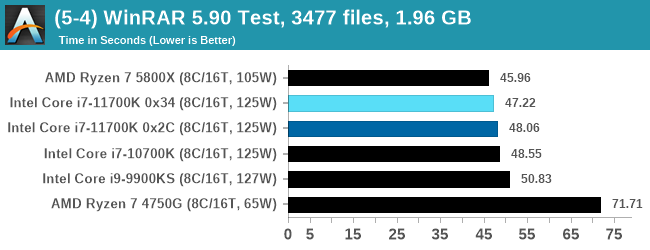
CPU Tests: Legacy and Web
In order to gather data to compare with older benchmarks, we are still keeping a number of tests under our ‘legacy’ section. This includes all the former major versions of CineBench (R15, R11.5, R10) as well as x264 HD 3.0 and the first very naïve version of 3DPM v2.1. We won’t be transferring the data over from the old testing into Bench, otherwise it would be populated with 200 CPUs with only one data point, so it will fill up as we test more CPUs like the others.
The other section here is our web tests.
Web Tests: Kraken, Octane, and Speedometer
Benchmarking using web tools is always a bit difficult. Browsers change almost daily, and the way the web is used changes even quicker. While there is some scope for advanced computational based benchmarks, most users care about responsiveness, which requires a strong back-end to work quickly to provide on the front-end. The benchmarks we chose for our web tests are essentially industry standards – at least once upon a time.
It should be noted that for each test, the browser is closed and re-opened a new with a fresh cache. We use a fixed Chromium version for our tests with the update capabilities removed to ensure consistency.
Mozilla Kraken 1.1
Kraken is a 2010 benchmark from Mozilla and does a series of JavaScript tests. These tests are a little more involved than previous tests, looking at artificial intelligence, audio manipulation, image manipulation, json parsing, and cryptographic functions. The benchmark starts with an initial download of data for the audio and imaging, and then runs through 10 times giving a timed result.
We loop through the 10-run test four times (so that’s a total of 40 runs), and average the four end-results. The result is given as time to complete the test, and we’re reaching a slow asymptotic limit with regards the highest IPC processors.
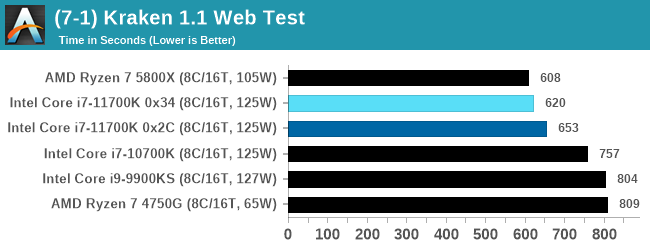
Google Octane 2.0
Our second test is also JavaScript based, but uses a lot more variation of newer JS techniques, such as object-oriented programming, kernel simulation, object creation/destruction, garbage collection, array manipulations, compiler latency and code execution.
Octane was developed after the discontinuation of other tests, with the goal of being more web-like than previous tests. It has been a popular benchmark, making it an obvious target for optimizations in the JavaScript engines. Ultimately it was retired in early 2017 due to this, although it is still widely used as a tool to determine general CPU performance in a number of web tasks.
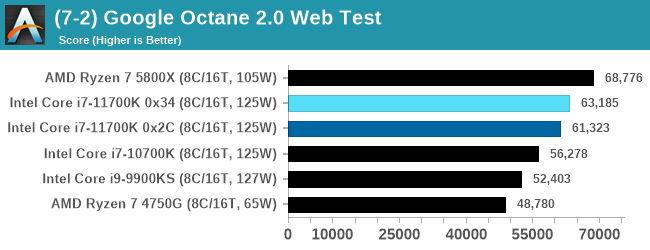
Speedometer 2: JavaScript Frameworks
Our newest web test is Speedometer 2, which is a test over a series of JavaScript frameworks to do three simple things: built a list, enable each item in the list, and remove the list. All the frameworks implement the same visual cues, but obviously apply them from different coding angles.
Our test goes through the list of frameworks, and produces a final score indicative of ‘rpm’, one of the benchmarks internal metrics.
We repeat over the benchmark for a dozen loops, taking the average of the last five.
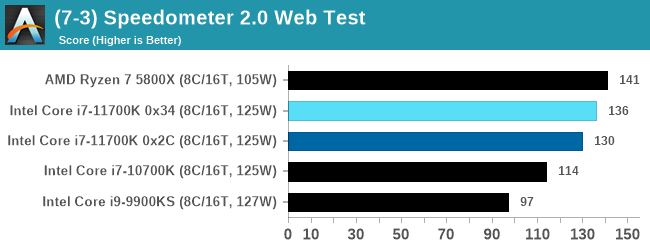
Legacy Tests
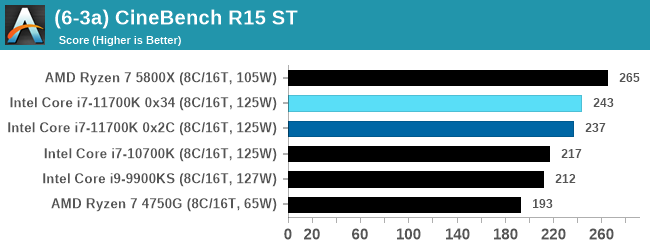
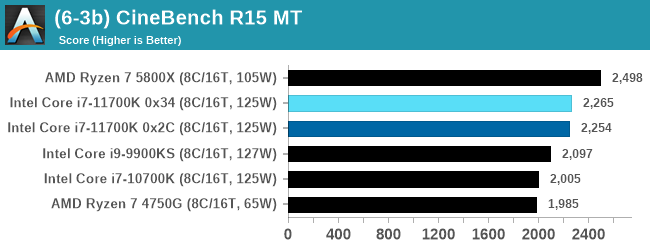
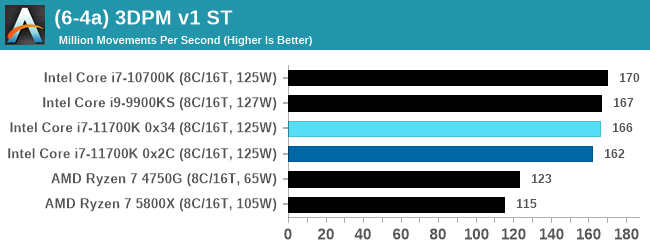
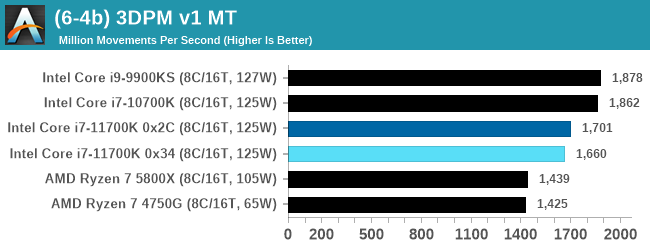


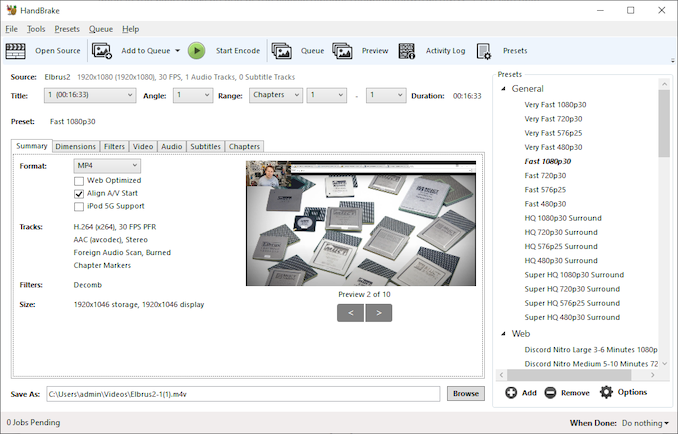
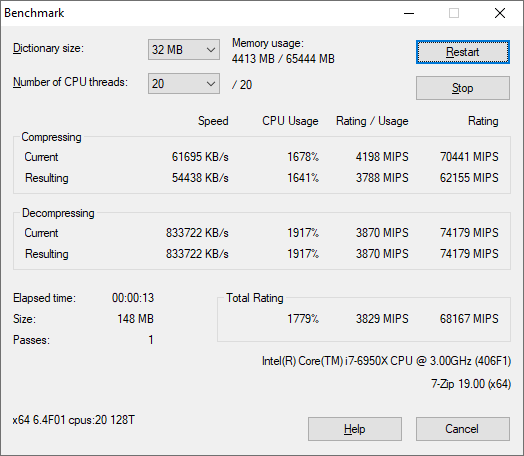
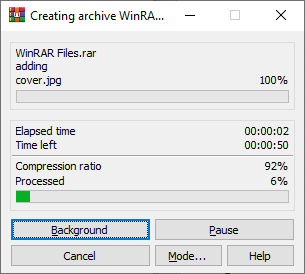

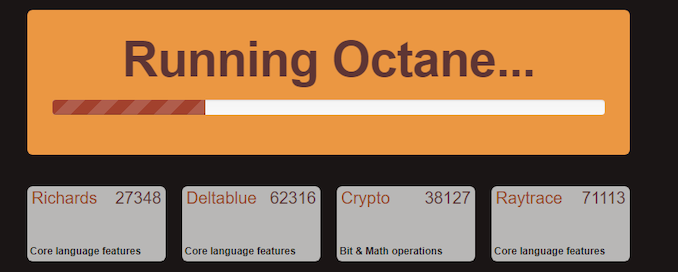
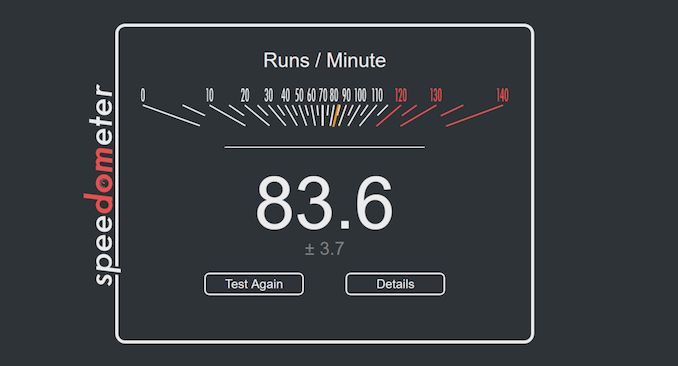








541 Comments
View All Comments
lmcd - Friday, March 5, 2021 - link
As an Intel fan, this is abysmal. This is literally only good for an i3 or i5 SKU, for its upgraded iGPU. That's it.Slash3 - Friday, March 5, 2021 - link
The 11th gen i3 SKUs will not feature the new Xe core - they are still based on Comet Lake.lmcd - Friday, March 5, 2021 - link
That makes this even sadder. This port was actually worthless. An i5 quad core might be manageable by a cooler that fits in an average case, but that's about it.Would've been better off releasing Tiger Lake 35W processors on an LGA package.
Slash3 - Friday, March 5, 2021 - link
The 6C/12T i5-11500 should be "fine," as it has the same 32CU Xe iGPU as the higher end parts. The part below it, the i5-11400, is also 6C/12T but has a cut down 24CU Xe core.The Xe upgrade is a nice change, at about a 33% uplift over the previous "Gen11" iGPU, but it's still just what I'd call "passable" for light gaming. Anything above 1080p and you'll want a discrete GPU for the best experience, and that goes for both teams.
lmcd - Friday, March 5, 2021 - link
I understand what you're saying but I still think the 6-core i5 is going to draw a boatload of power.Obviously for gaming a dGPU is preferable. In my experience with AMD's Ryzen 2400G, though, it isn't actually too stable with medium resolution monitor configurations (think 1080p + 1440p) and isn't all that well supported by drivers.
On the Intel side, uplift over Gen11 is cool but uplift over Gen9 is where it gets noticeable, and important. Gen9 was fine when it came out but that was quite some time ago. Shows its age when too many apps want GPU acceleration with that same multi-monitor setup I described.
lmcd - Friday, March 5, 2021 - link
Sorry, didn't complete my thought. Anyway, point is that a decent % of Intel's sales are for business desktops (maybe not right now, but, ya know, offices might open up sometime this calendar year, before Alder Lake ships in volume). Rocket Lake i5 would be perfect, if its real-world power consumption wasn't out the roof. Good enough graphics for multi-monitor, fine performance elsewhere.I guess that makes me wonder what performance would be if limited to a 65W avg/95W peak thermal output. That's about what those small Dell towers can handle.
Slash3 - Friday, March 5, 2021 - link
Yep, I'm with you.I honestly don't expect the i5 models to have the same outlandish power usage characteristics as the reviewed i7, but will definitely be reading any day one reviews that may pop up. The existing i5-10400 is a pretty compelling product (and priced well), and if the 11400 or 11500 can manage to fit into the same ~100W PL2 envelope I think it'll find a home in a lot of desktops. For OEMs, they're sometimes board limited to the 65W PL1 via a BIOS option, and I'd expect that to continue with the 11th gen versions.
If they price the 11400 close to the 10400, it'll be a solid choice.
Makaveli - Friday, March 5, 2021 - link
The Turbo for the 5800X should be 4850 that is what I see at stock. So the table is off by 50mhzSaturnusDK - Saturday, March 6, 2021 - link
Not really. AMD changed the way they report boost frequency numbers. Before it was "up to xxxxMHz boost", now it's the more wordy "given adequate cooling the boost frequency is _at least_ xxxxMHz". This change was driven by the stick they got for the 3000-series only very rarely hitting the listed boost frequency. Now you can generally assume to get 50-100MHz _above_ the listed boost frequency if you have a half-decent cooler.Marlin1975 - Friday, March 5, 2021 - link
WTF!!! 291 watts?!?!?Intel REALLY needs to step up is manufacture game. Designs seem ok but the nodes are killing them.